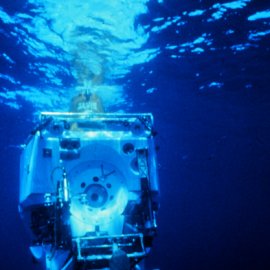RESCUE, part 25: How to Transform the Ocean Apparat
-
English
-
ListenPause
[intro music]
Welcome to World Ocean Radio…
I’m Peter Neill, Director of the World Ocean Observatory.
We have never known more about the ocean than we do today. The Nippon Foundation and others are dedicated to mapping 100% of the ocean floor. Various major foundations have tripled down on support of marine science, particularly in marine protected areas worldwide. There are rumors of substantial increases in US government funding for expanded research across the full spectrum of the ocean profile. It is all good.
But despite all, progress has proven slow, not just for lack of resources, but for the various standing organizations doing the research and allocating or receiving the funds. The UN sits at the apex of the international structure. The two primary sub-sets in the United States are first, the national government organizations – the National Oceanic and Atmospheric Administration (NOAA) and the National Science Foundation (NSF), and second, the universities, institutes, and certain large non-governmental organizations (NGOs) with special interest and capacity. Available funds are specifically targeted, often multi-year, competitive, peer-reviewed, and published in academic journals, occasionally amplified by conference, the press, and social media. My inbox receives a constant stream of such reports and results and invitations where this work is shared almost exclusively with other scientists and policy-makers in a delimited, digital echo-chamber of incremental progress, with an occasionally dramatic discovery. I call this collective endeavor “the ocean apparat.”
The apparat has its own sense of time, its own esoteric language, its own competitiveness, its own meetings, its own rituals, its own high priests and acolytes, its own hierarchy and exclusivity that is not particularly interested or motivated to share the records and revelations beyond itself -- a press release, a newsletter announcement -- or to reward an occasional rebel who attempts to reach outside the chamber to the public, to you and me who are the underlying financers and overlying beneficiaries of the entire endeavor. The apparat has its own complex architecture: divided into silos and sub-structures by scientific interest, discipline, geography, and patronage. Regardless of intent, it is a tightly enclosed circle. This circumscribed, constricted transformation of marine research into justification for policy and thereby for action and implementation lies at the core of the slowness of our response to the multifaceted challenges to the ocean today, as significant impedance to progress termed “too little, too late.”
How might it change? Here are some ideas.
First, all grants must be “cross-cutting,” that is, built into the proposal team and budget, they must include inter-disciplinary connection, multiple points of view, evinced by the interests and the institutional identity of the investigators and the intended outcomes. The research is focused, but the team must be additionally inclusive of scientific disciplines, diverse identity and location, as indicative of a process that conjoins pure science with social perspectives, and insists on a communications strategy that reaches other experts and policy-makers, educators, and curious individuals through broad, accessible public distribution. What if funding proposals included such individuals, qualified in such expertise, that would add interpretations to the research results, suggestions for additional inquiry or applications for use? What if every grant required a secondary school educator to be part of the team and some form of curricular outcome be part of the final evaluation? What if every grant required a journalist and an artist to track the research experience in narrative and visualization that would enable the investigators to explain their methods, their challenges and frustrations, their explanations and speculations, as means to extend and enrich their experience?
In his famous 1959 Rede lecture, the English novelist, C.P. Snow, lamented the modern separation of “the two cultures,” science from the arts, the two fundamental poles of human intellectual activity. In “apparat” described, that separation persists. In a system, as inter-connected as the ocean, what if we advanced a similarly integrated response to research questions posed, and to the larger related challenges we face, through the reconciliation of this false dichotomy, through a humanizing process, that opens the apparat to successful connection and communication within and with us all, as another positive step toward RESCUE: R for renewal; E for environment; S for sustainability; C for community; U for understanding; and E for engagement.
We will discuss these issues, and more, in future editions of World Ocean Radio.
[outro music]
This week we continue the multi-part RESCUE series with a proposed solution to advance successful connection and communication within and with those who fund and communicate ocean programs and projects.
RESCUE as an acronym offers a plan for specific action and public participation: Renewal, Environment, Society, Collaboration, Understanding, and Engagement.
About World Ocean Radio
5-minute weekly insights dive into ocean science, advocacy and education hosted by Peter Neill, lifelong ocean advocate and maritime expert. Episodes offer perspectives on global ocean issues and viable solutions, and celebrate exemplary projects. Available for syndicated use at no cost by college and community radio stations worldwide.
Image
NOAA Photo Library OAR
National Undersea Research Program (NURP)
- Login to post comments



